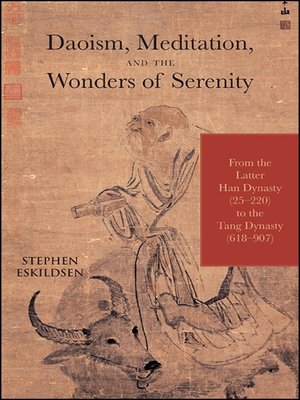Daoism, Meditation, and the Wonders of Serenity
ebook ∣ From the Latter Han Dynasty (25-220) to the Tang Dynasty (618-907) · SUNY Series in Chinese Philosophy and Culture
By Stephen Eskildsen

Sign up to save your library
With an OverDrive account, you can save your favorite libraries for at-a-glance information about availability. Find out more about OverDrive accounts.
Find this title in Libby, the library reading app by OverDrive.



Search for a digital library with this title
Title found at these libraries:
| Loading... |
Stephen Eskildsen offers an overview of Daoist religious texts from the Latter Han (25–220) through Tang (618–907) periods, exploring passive meditation methods and their anticipated effects. These methods entailed observing the processes that unfold spontaneously within mind and body, rather than actively manipulating them by means common in medieval Daoist religion such as visualization, invocations, and the swallowing of breath or saliva. Through the resulting deep serenity, it was claimed, one could attain profound insights, experience visions, feel surges of vital force, overcome thirst and hunger, be cured of ailments, ascend the heavens, and gain eternal life.
While the texts discussed follow the legacy of Warring States period Daoism such as the Laozi to a significant degree, they also draw upon medieval immortality methods and Buddhism. An understanding of the passive meditation literature provides important insights into the subsequent development of Neidan, or Internal Alchemy, meditation that emerged from the Song period onward.
While the texts discussed follow the legacy of Warring States period Daoism such as the Laozi to a significant degree, they also draw upon medieval immortality methods and Buddhism. An understanding of the passive meditation literature provides important insights into the subsequent development of Neidan, or Internal Alchemy, meditation that emerged from the Song period onward.






